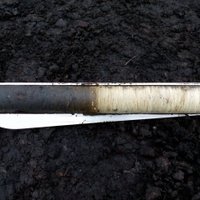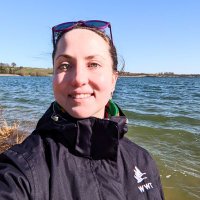
Auger Project
@projectauger
AUGER Project is an @EPAResearchNews funded project investigating the peatland properties influencing greenhouse gas emissions and removals @Flo_RenouWilson
ID: 1130787604570542081
http://www.ucd.ie/auger 21-05-2019 10:49:08
24 Tweet
126 Takipçi
24 Takip Edilen


Tune in tonight Tuesday 9.35pm @ RTEONE for Hot Air: Ireland’s #ClimateCrisis” where Philip Boucher-Hayes and Flo Renou-Wilson 🔕 will be discussing the potential of peatlands to lock in carbon and mitigate climate change #KeepItInTheGround #Peatlands EPA Research News

5 Dec is #WorldSoilDay. No #soil = no food, no carbon sink, no ecosystem services, no life, no future. Wet #peatlands soil = better chance to reduce climate chaos; cleaner air; more ecosystem services, better future EPA Research News UCD Earth Institute





Great 3 min video explaining the impacts of draining peatland on carbon emissions, hydrologoy and peat structure thanks to IUCN UK Peatlands Richard Lindsay EPA Research News youtu.be/DUFqrN1dxjU

Congratulations Rosie M. O'Neill


This week #EGU20 we presented provisional results from the Auger Project with our postdoc Alina Premrov gave insights into peatland biogeochemical modelling of CO2 using ECOSSE process based model. Our PhD Kilian Walz uncovered the factors affecting carbon stocks in Irish peatlands




JUST PUBLISHED: Development of new drainage factor for an improved ECOSSE water table simulation approach for modelling CO2 fluxes from drained and rewetted peatlands sciencedirect.com/science/articl… Co-authors @peatyGHG, Matt Saunders, Jagadeesh Yeluripati & Flo Renou-Wilson 🔕 EPA Research News

The final version of our paper is now available online Alina Premrov Flo Renou-Wilson 🔕 Matt Saunders @peatyGHG Jagadeesh Yeluripati Auger Project doi.org/10.1016/j.scit…





Robust results from 5 years monitoring confirms that rewetting drained bogs 1) reduce C emissions 2) establish optimal conditions for C sequestration & 3) set the site on a climate cooling trajectory. Funded by EPA Ireland Auger Project onlinelibrary.wiley.com/doi/10.1111/gc… EPA Research News


9. And recent work by Auger Project estimates that Irish peatlands store a staggering 2.2 billion tonnes of carbon. However, less than 15% of Irish peatlands are in near-natural state, and the area actively sequestering carbon is likely to be even less. epa.ie/publications/r…
